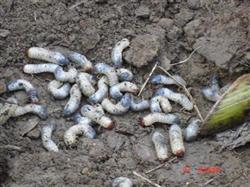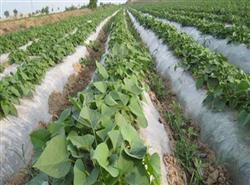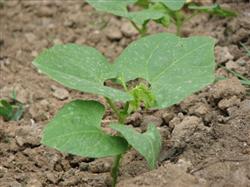What are the pests of growing sweet potatoes?

What are the pests of growing sweet potatoes? What are the hazards and how to prevent them? Also ask netizens to help introduce the method of farming network sorted out sweet potato pests, there are hollow insects, leaf curlers and Spodoptera litura, listed below for netizens' reference. The harm of hollow insects to sweet potato and its control methods: hollow insects generally occur 3 generations a year in the south of China. The adults bite the tender stems and petioles, and the larvae enter the potato vines. Except for the damage to the seedlings from May to June, the period from August to October is the second damage period. As a result, the leaves of some sweet potatoes have been bitten into small holes, the edges of the leaves have been gnawed, the protruding parts of the veins on the back of the leaves have also been eroded, and the exposed potato pieces have also been harmed. The control method of hollow insect: it is mainly sprayed with 90% crystal trichlorfon 1000 / 2000 times liquid during the peak period of adults. Most of them were killed on the young stems of sweet potatoes at the seedling stage. Harm of leaf curlers to sweet potato and its control methods: leaf curlers occur for 5 generations a year in the south of China. The adults are mostly hidden on the back of the leaves, and the larvae are about 15 mm long, lively and active. If touched, they will soon fall to the ground and lurk. The larvae mainly harm the sweet potato leaves, often spinning the corner of the sweet potato leaves into the leaves, and then nibbling away the mesophyll, so that the sweet potato leaves are eaten up, which does great harm to the yield and quality of the sweet potato. Control methods of leaf curlers: when the larvae show signs of harm, they can be sprayed and killed with 40% available phosphorus EC 1500 Mel 2000 times, or with 50% phoxim emulsion 1000 times, 80% crystal trichlorfon 700 000 times. When the larvae occur more frequently, the larvae in the rolled leaves can be pinched and killed by hand to prevent spread harm. The harm of Spodoptera litura to sweet potatoes: Spodoptera litura produces about 5 generations a year in the south, and generations overlap in some places. The adults laid their eggs on the back of the leaves in the shape of steamed bread. The surface of the eggs changed from yellow-white to dark gray. The larvae had 6 instars and the body length was 18Mel 20mm. The larvae first eat the lower epidermis of the leaves, and the remaining upper epidermis and veins form membranous spots. The larvae were scattered everywhere after the second instar. The larva is an omnivorous pest. When the population density increases, it not only eats up the leaves of sweet potato, but also eats tender stems and petioles, and transfers to other places. The control method of Spodoptera litura: the egg blocks on the back of leaves were removed manually; before the 3rd instar, different pesticides were sprayed according to local conditions, which could be sprayed after 4 o'clock in the afternoon with 10 ml of 1.0% methamidophos and 15 kg of plain benzoate EC, or 1000 times of 50% phoxim emulsion, or 800 times of 90% crystal trichlorfon or 1000 times of 50% fenitrothion emulsion. Click to get more sweet potato planting techniques click to get more vegetable planting techniques
- Prev

How to fertilize sweet potato with high yield?
How to fertilize sweet potato with high yield? Ask netizens to help guide sweet potato planting reasonable fertilization can prevent premature senescence, maintain the assimilation ability of leaves, promote the transport of nutrients to the root tuber, so as to increase yield. The farming network has sorted out the fertilization methods of sweet potatoes, which are listed below for netizens' reference. Method 1.
- Next

Bean planting: how to manage growing beans at ordinary times?
How to manage growing beans at ordinary times? Please introduce the daily management methods for planting beans, there are mainly the following for reference: 1. Check seedlings, replenish seedlings, fix seedlings: when there are basal leaves in beans, check seedlings in time to ensure that seedlings are strong. After emergence, the seedlings were planted for 1 ~ 2 times. When there is a compound leaf, set the seedling, each hole.
Related
- Where is it suitable to grow horseradish in China? it is expected to see the middle altitude horseradish in Alishan.
- How to prevent tomato virus disease reasonably? (Control methods included)
- Many people like to plant towel gourd on the balcony. What are the main points of this method and management?
- What crops can chili peppers be mixed with?
- Fertilization techniques and matters needing attention in Tomato
- What are the grafting techniques for peach seedlings in spring?
- Harm and control methods of root swelling disease of Chinese cabbage
- What are the pests of sweet potatoes? How to prevent and cure it?
- Symptoms, causes and Control methods of navel Rot in Tomato
- The cause of "Cucumber rotten bibcock" in Farmers' planting Cucumber and its Control Plan

